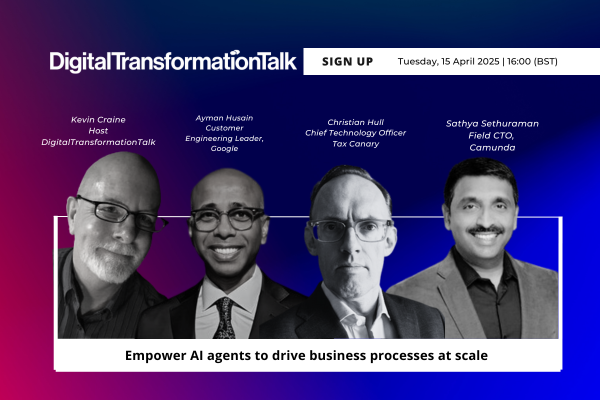FinTechTalk: The new Big Bang! Inside the next generation of data analytics for banks
On 30 January 2024, FintechTalk host Charles Orton-Jones was joined by Emad Shawky, Chief Data and Analytics Officer, Banque Misr; Vincent Nys, Product Owner Data & AI / Innovation Data Chapter Lead, Keytrade Bank.
Where things stand with GenAI
83 per cent of banks have no access to real time analytics, partly because banks operate secure systems comprising a lot of legacy architecture. They also have a tendency to keep critical data on their premises, which doesn’t enable the dismantling of silos. However, culture is also an important factor, as for banks, perfect can become the enemy of good. They should come out more often with MVPs, especially in non-critical areas.
The most important thing is that banks shouldn’t wait until they have acquired real-time analytics capabilities to leverage available data. While integrating their legacy systems, banks should build their new technology stack too with a view to managing real time data streams. Fraud detecting is an area, though, where at least near-real-time data analytics are pivotal. AI, on the other hand, must be trained on off-line data too and the same data can be used both in off-line and online processes. A lot of the data, for example, must be processed overnight for security reasons and in order to save online processing capacity.
What kind of infrastructure is required for next generation data analytics?
Although some of the legacy systems don’t even enable APIs, incumbents need to work with their existing infrastructure and can’t just replace it overnight. A dual approach to digital transformation means that integrated legacy systems and digital native, next generation technology stacks need to co-exist. Use cases must be reviewed to see whether they can be addressed only by the latest digital technologies or some more established technologies are also suitable for solving them. With greenfield technology projects, it’s the lack of data that poses the main challenge. For these, the ideal model for banks is to run their own models and finetune them.
In data analytics, GenAI such as Co-pilot can do a great job at creating dashboards following verbal instructions. For external use, chatbots are the rage now. But it may happen, that following months of software development to build a reliable GenAi-driven chatbot go down the drain when eventually a role-based model proves much better a solution. Legislation on the explainability of algorithms can also limit the scope of GenAI deployments. To get and retain the right IT talent, banking as an industry must be presented as an appealing sector to candidates.
Another constraint to the uptake of the latest digital technologies in banking is that board members often see data integration as an intimidating topic. The RoI of data analytics investment depends on where you make them. Beside fraud detection, the highest value can be leveraged in sales, where data analytics enhance cross and up selling. Meanwhile, investments in operational efficiency and productivity bring returns in the longer term. One of the most important skills in the next 5 years or so will be prompt-engineering, which can help maximise the efficiency of generative AI. Large language models will most probably be hosted by cloud providers, so individual companies won’t have any trouble building them. Thanks to GenAI tools, data analysts in the future must only use English to do their job.
Finally, to assess their data preparedness, businesses must ask themselves how central data is to their operation. Does it inform decisions? Is it leveraged to personalise the customer experience?
Panels’s advice
- When deploying AI-driven technology, think vertically and focus on just one use case first.
- Deploying an autonomous chatbot doesn’t make a business sense if you need to train the algorithm what to answer to each and every question.
- Make sure you select the right architecture and tools when upgrading your system.
- To eliminate silos, create cross-functional teams where everyone has access to a 360 degree customer view.
- A basic knowledge of Python combined with ChatGPT will be the most sought-after data analyst skills in the foreseeable future.

Business Reporter Team
Related Articles
Most Viewed
Winston House, 3rd Floor, Units 306-309, 2-4 Dollis Park, London, N3 1HF
23-29 Hendon Lane, London, N3 1RT
020 8349 4363
© 2025, Lyonsdown Limited. Business Reporter® is a registered trademark of Lyonsdown Ltd. VAT registration number: 830519543





